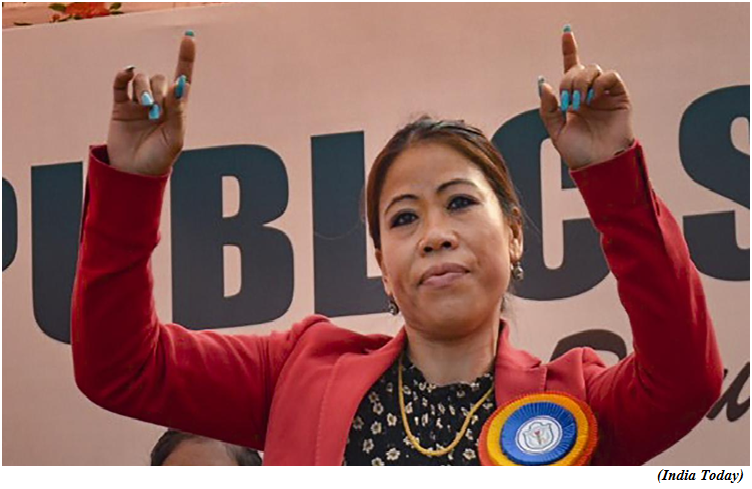The dark sky is a natural resource, and too much light is polluting it (GS Paper 3, Environment)

Why in news?
- On December 14, 2022, the district administration of Ladakh designated six hamlets within the Changthang Wildlife Sanctuary as a “dark-sky reserve”, an area whose sky is free of light pollution.
- The designation meant that the reserve had a responsibility to keep the skies dark, particularly for the astronomical observatories located in the area.
Concerns:
- When private space venture company SpaceX’s Starlink constellation of small satellites began to obscure the view of ground-based telescopes around the Earth, the idea of the sky as a natural resource capable of being polluted became popular.
- These incidents also rendered the absence of a global treaty to reduce light pollution more conspicuous.
- But while authorities safeguard telescopes’ access to dark skies by actively lowering light pollution around their sites, the night-sky elsewhere is actually becoming brighter due to ‘skyglow’, which has significant ecological, health and cultural consequences.
New study:
- In a new study titled ‘Citizen scientists report global rapid reductions in the visibility of stars from 2011 to 2022’, researchers from Germany and the U.S. analysed a global database of what the dimmest star visible from a particular location is.
Key Findings:
- They found that non-natural light had increased the brightness of the artificial glow of the night sky, or skyglow, by 9.2-10% every year between 2011 and 2022.
- Specifically, the skyglow had brightened around 6.5% over Europe, 10.4% over North America, and 7.7% over the rest of the world.
- The finding is significant because it disagrees with satellite-based data, which has indicated that the rate of increase has been around 2% per year.
- The discrepancy is probably because satellites are unable to ‘sense’ blue light emitted by LEDs and to study light that is emitted parallel to the ground.
- Visible light emitted by many sources is divergent, so light emitted insufficiently downward could find its way into the sky. Almost all surfaces in cities reflect light, meaning a portion of entirely down-cast light will be reflected upwards, contributing to night-time light pollution.
The consequences:
- Regardless of historical or geographical context, humans tend to use as much artificial light as they can buy for about 0.7 percent of GDP. That is, even though LEDs have become more efficient, their utilisation hasn’t decreased, which in turn means the carbon emissions due to their production and use hasn’t decreased.
- Numerous studies have also found that artificial light at night affects both people and wildlife in significant ways.
- The lit beaches deter sea turtles from coming ashore to nest. Skyglow keeps trees from sensing seasonal variations.
- Young burrow-nesting seabirds don’t take flight unless the nesting site becomes dark.
- Clownfish eggs don’t hatch when exposed to artificial light at night, killing the offspring.
- Skyglow interferes with multiple aspects of insect life and allows insect predators to hunt for longer.
Impact on circadian rhythm:
- Parties to the Convention on Migratory Species adopted guidelines to address the problem at their meeting in Gandhinagar in 2020.
- By disrupting the circadian rhythm, artificial light at night can hamper the production of melatonin, an influential hormone in the human body which affects sleep, moods and cognition.
- A small 2009 review concluded that circadian disruption increased the risk of breast cancer among night-shift workers by 40%.
Subhash Chandra Bose Aapda Prabandhan Puraskar-2023
(GS Paper 1, History)
Why in news?
- For the year 2023, Odisha State Disaster Management Authority (OSDMA) and Lunglei Fire Station (LFS), Mizoram, both in the Institutional category, have been selected for the Subhash Chandra Bose Aapda Prabandhan Puraskar-2023 for their excellent work in Disaster Management.

Winners:
OSDMA:
- Odisha State Disaster Management Authority (OSDMA), was established in 1999 in the aftermath of the Super Cyclone.
- OSDMA embarked on multiple initiatives including raising of the Odisha Disaster Response Action Force (ODRAF), Multi-hazard Early Warning Service (MHEWS) framework, and a cutting-edge technology-enabled web/smartphone-based platform called "SATARK" (System for Assessing, Tracking, and Alerting Disaster Risk Information based on Dynamic Risk Knowledge).
- OSDMA provided effective response during various cyclones, Hudhud (2014), Fani (2019), Amphan (2020) and Odisha floods (2020).
Lunglei Fire Station:
- Lunglei Fire Station, Mizoram, responded efficiently and effectively to a massive forest fire which was reported on 24 April 2021 in the uninhabited forest areas that surrounded Lunglei town and spread to more than 10 village council areas.
- Lunglei Fire Station personnel assisted by local civilians worked continuously for more than 32 hours during which they motivated and provided on the spot training to residents.
- Due to the valiant, brazen and prompt efforts of Fire & Emergency staff in the putting out the flames, there was no loss to life and property and the spread of fire to other parts of the State was prevented.
About Subhash Chandra Bose Aapda Prabandhan Puraskar:
- The Government of India under the leadership of Prime Minister has instituted an annual award known as Subhash Chandra Bose Aapda Prabandhan Puraskar to recognize and honour the invaluable contribution and selfless service rendered by individuals and organizations in India in the field of disaster management.
- The award is announced every year on 23rd January, the birth anniversary of Netaji Subhash Chandra Bose.
- The award carries a cash prize of Rs. 51 lakh and a certificate in case of an institution and Rs. 5 lakh and a certificate in case of an individual.
Union Sports Ministry forms Oversight Committee headed by Khel Ratna MC Mary Kom to enquire into allegations against WFI
(Miscellaneous)
Why in news?
- Recently, the Ministry of Sports has formed an Oversight Committee to enquire into the allegations of sexual misconduct, harassment and/intimidation, financial irregularities and administrative lapses, levelled by prominent sportspersons.
- The Oversight Committee will also undertake the day-to-day administration of WFI, during the course of the enquiry.

Agenda:
The Committee has been formed
- To safeguard the interest of athletes, following complaints by wrestlers of sexual harassment by the President, other officials and coaches of the Wrestling Federation of India, and
- To promote good governance in WFI following allegations of financial mismanagement and arbitrariness by athletes.
Members:
- The Oversight Committee will be headed by Khel Ratna Awardee MC Mary Kom, Chairperson, Athletes Commission, Khel Ratna Awardee Yogeshwar Dutt, executive council member, IOA, Dhyanchand awardee Trupti Murgunde, member Mission Olympic Cell, Radhica Sreeman, Ex-Executive Director, TEAMS, Sports Authority of India, Crd (Retd) Rajesh Rajagopalan, Ex-CEO, Target Olympic Podium Scheme.
What’s next?
- The oversight committee will complete the enquiry within 4 weeks.
- The Ministry has instructed the executive committee of WFI to abstain from managing the day-to-day activities of the federation, with immediate effect, until further communication.




